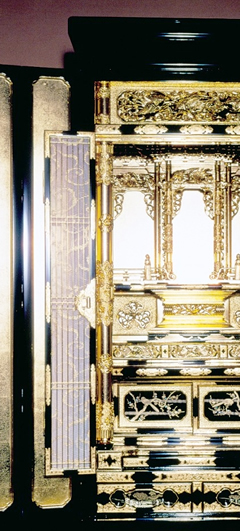YAMEFUKUSHIMA Butsudan (Household Buddhist Altars)

One night in the early 19th century, a cabinetmaker had a dream about a majestic Buddhist building. Inspired by this dream, he enlisted the help of his colleagues and together they built the first Yamefukushima household altar.
However, it was not until the middle of the century that the appropriate techniques were developed and production began in earnest. By the end of the Edo era (1600-1868), the craft had developed into a small industry employing about 50 craftsmen specialized in preparing the wooden base, sculpting the decorations, fashioning the fittings and finishing the altar.
To maintain the quality and character of the Yamefukushima household altars, nearly all of the work is done by hand using the same materials that were used prior to the Edo era. Most parts of the altar are gilded, bringing out its best features.
Feature
Most parts used to produce Yamefukushima household altars are made by hand, using the same materials that were in use prior to the Edo era. This, along with the application of gold leaf over nearly the entire altar, preserves the traditional quality and sensibility of the craft.
How to make
The production process involves seven stages comprising more than 80 steps, including engraving, metal fitting, painting, lacquering and assembly. Most parts, except for the base, the inner palace (kuden) and a few wood sculptures, are crafted by hand.

